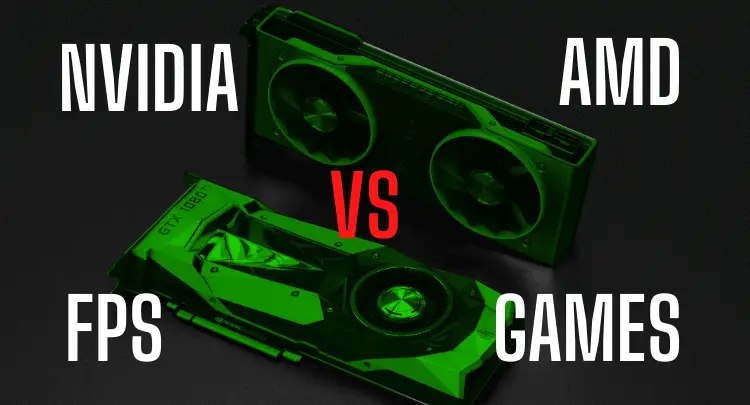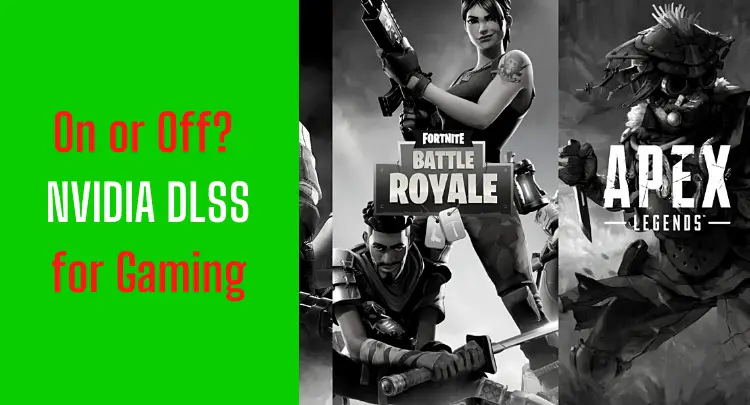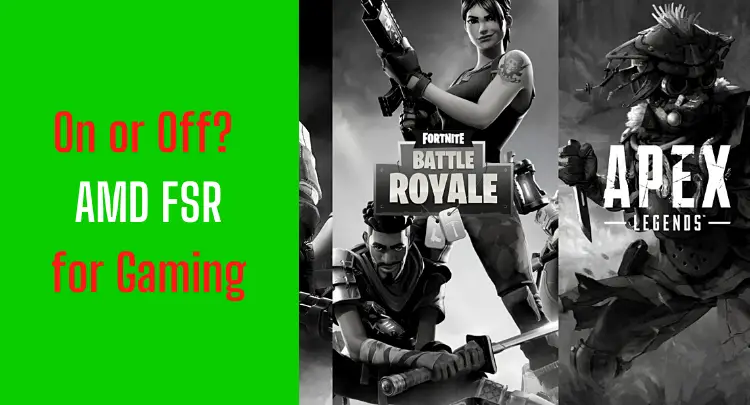Already with the first 3D games with polygon graphics on PC, the question of the best graphics card came up immediately. Since I screwed most of my systems together myself, I can speak from experience. This article will focus on Nvidia and AMD graphics cards’ performance in first-person shooters like CSGO, Call of Duty, PUBG, etc.
Which graphics card manufacturer is better suited for FPS games?
Nvidia has much more setting options via the Nvidia Control Panel software. The low latency mode, the Reflex feature, and the frames per seconds limitation are crucial for FPS games. Features like G-Sync, DLSS, and NVENC are qualitatively better than the comparable features from AMD.

Masakari and I have each been playing computer games for over 35 years. For a large part of that time, we played on PC. We have, of course, tried AMD cards (there used to be other manufacturers as well in the past), but when it comes to first-person shooters, there are no two opinions: Nvidia is ahead of the competition every year.
To be clear, we have nothing against AMD and are not sponsored by Nvidia. There are undoubtedly many graphics-intensive genres where AMD makes more sense, but for FPS games, where it’s mainly about performance, we vote for Nvidia.
Note: This article was written in English. Translations into other languages may not provide the same linguistic quality. We apologize for grammatical and semantic errors.
Let’s briefly rattle off the points and compare the graphics cards from Nvidia and AMD in detail:
Power Consumption and Efficiency
Without overclocking or undervolting, comparing the latest Nvidia and AMD graphics cards brings a precise result. AMD graphics cards consume less energy with the same performance requirements. In return, Nvidia always beats the competition in overall performance and efficiency, which is more critical than energy consumption for a stable and high FPS rate in shooter games.
Features
We don’t want to start comparing every feature in deep detail. That makes no sense. Features can change at any time.
Relevant tests have shown that AMD and Nvidia always serve exactly the same features. When AMD invents something new, Nvidia follows suit very quickly. And vice versa.
There is only one striking difference: Nvidia is always ahead in terms of quality and performance regarding FPS games’ features. That starts with screen tearing above 60 Hz (G-Sync) and ends with reducing latencies (Reflex).
You have to keep in mind that AMD is much smaller than Nvidia and has much more brainpower to develop these features.
Honest recommendation: You have the skill, but your mouse doesn't support your aiming perfectly? Never struggle with your mouse grip again. Masakari and most pros rely on the Logitech G Pro X Superlight. See for yourself with this honest review written by Masakari or check out the technical details on Amazon right now. A gaming mouse that fits you makes a significant difference!
Drivers
Nvidia is not only bigger when it comes to development budgets but naturally also runs much more graphics cards. Every computer system is different, which means that every manufacturer has to deal with individual problems after the latest graphics card generation rollout. Updates can also unintentionally worsen performance on specific systems.
The more gamers test and give feedback, and the faster such bugs are fixed. Nvidia has an advantage here because the community is bigger.
Driver conflicts are detected faster.
Software
We don’t need to say much here. Nvidia has created means to adjust an incredible number of things quickly and conveniently with the control panel and even more special tools. AMD does the same thing. But that should also be the minimum requirement that you can configure a graphics card precisely according to your wishes.
Pricing
Here, too, every sentence is written too much. Nvidia is more expensive in a direct comparison of graphics card generations. No discussion. However, you can see that you get more performance for more money when comparing the performance data.
If you want your new FPS game to run with the best possible performance so that the frames per second lead to smoother gameplay, and therefore ultimately to more kills, then the price of Nvidia is not an opposing argument.
Conclusion
As a reminder, we want to make you better with our information. Technology is part of it. If you’re looking at it from a professional gamer’s perspective, you want to squeeze the best possible performance out of your system. Under this premise, you can’t get around a graphics card from Nvidia.
The last features from NVIDIA and AMD that are in direct competition are DLSS and FSR. You can learn more about them here:
and
If you have to make compromises because you cannot or do not want to pay the higher price of Nvidia, then there is nothing against a graphics card from AMD in principle. But you know our opinion now 😉
If you have a question about the post or pro gaming in general, write us: contact@raiseyourskillz.com.
If you want to get more exciting information about becoming a pro gamer and what relates to pro gaming, subscribe to our newsletter here.
GL & HF! Flashback out.




